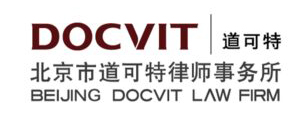The new Company Law becoming effective on 1 July 2024 introduces many significant changes having material effect on company law practices and corporate governance, with one key revision regarding shareholder rights. Safeguarding legitimate rights of compliant shareholders, this provides additional avenues to maintain capital adequacy of companies while ensuring internal autonomy in addressing shareholder deficiencies in capital contributions.
Share forfeiture rule
Article 52 introduces a shareholder forfeiture rule, stating that “where a shareholder fails to pay the capital contribution in accordance with the date specified in the articles of association”, the company may issue a written reminder requesting the contribution, indicating a grace period for payment. The grace period shall not be less than 60 days from the date of the reminder. Upon expiration of the grace period, if the shareholder still fails to fulfil the contribution obligation, the company may issue a notice of forfeiture in writing to the shareholder, who loses their equity rights in the unpaid capital contribution from the date of notice.
Shareholder removal v forfeiture

Salaried Partner
DOCVIT Law Firm
Article 17 of Judicial Interpretation III of the Company Law stipulates the shareholder removal rule, which is regarded as the predecessor of the share forfeiture rule. But they differ in application, procedures, legal consequences, follow-up action and remedies.
Application. The share forfeiture rule applies to cases of partial or non-performance of a shareholder’s capital contribution obligation, whereas the shareholder removal rule applies solely to instances of non-performance of the capital contribution obligation or full withdrawal of capital contribution.
Procedural requirements. The rule requires the company to issue a written reminder first. If the shareholder still fails to fulfil its capital contribution obligation when the grace period of not less than 60 days expires, the company may issue a forfeiture notice through a resolution of the board of directors.
However, the shareholder removal rule imposes no requirements on the form of call for payment, or the duration of a reasonable grace period. Instead, it necessitates a resolution by the shareholders’ meeting.
Legal consequences. The rule triggers a partial or full deprivation of shares, while the shareholder removal rule leads to the removal and disqualification of the shareholder.
Follow-up action. The rule prescribes a six-month timeframe for disposal of forfeited shares from when the notice was issued. In contrast, the shareholder removal rule merely mentions that the company should promptly reduce its capital, or other shareholders or a third party should pay the corresponding capital contribution, without specifying a time limit.
Shareholder’s remedy. Under the share forfeiture rule, a shareholder has the right to file a dissent action within 30 days from the date of receiving the notice of forfeiture. But the shareholder removal rule provides no remedy for a removed shareholder.
Applying for shareholder removal
Lawsuit confirming invalidity of company resolutions. In such lawsuits, the court primarily scrutinizes: whether the company disqualifies a shareholder in compliance with the statutory conditions and procedures; whether a reminder has been issued with a reasonable grace period; and whether a shareholders’ meeting is lawfully held with a resolution adopted.
One main ground for rejection is if the circumstances fall outside non-performance of the capital contribution obligation or full withdrawal of capital contribution.
Under the new Company Law, the share forfeiture rule addresses whether the shareholder removal rule applies to the partial performance of the capital contribution obligation. In addition, the share forfeiture rule has provided clarification on the “call for payment” and “reasonable grace period”, providing a basis for the court to review the pre-procedure for adopting a removal resolution.
Company discretion to specifying grounds for removal. In judicial practice, most courts hold that in the absence of prohibitions in current laws and regulations, a company may use discretionary grounds for shareholder removal. However, such discretionary grounds shall not contravene laws and regulations or infringe upon the legitimate rights and interests of other shareholders.
Alternatively, under certain conditions, companies can specify more stringent grounds for shareholder removal than those in judicial interpretation III.
Under the share forfeiture rule, since the shareholder removal and full shares forfeiture have the same legal implications, whether a company’s removal of a shareholder based on non-statutory grounds violates the new Company Law – and whether existing judicial rules can be applied – requires further confirmation in judicial practice.
Exclusion of voting rights for removed shareholders. In judicial practice, the court’s evaluation of whether to exclude voting rights of removed shareholders reverts to the fundamental basis of voting rights – the shareholder’s capital contribution obligation.
Most courts hold that the removed shareholder is not entitled to vote, otherwise article 17 of judicial interpretation III would be null. Some even argue that all shareholders who have not fulfilled their capital contribution obligations lose their voting rights, breaching the principle of good faith otherwise. Voting rights are linked to the fulfilment of capital contribution obligations. If a member of the board of directors is also a shareholder, the issue of whether their partial performance of the capital contribution obligation will trigger exclusion of the voting right and directorship from the board resolutions is a new issue derived from judicial practice.
Implementing share forfeiture
No link established between board resolution and forfeiture notification. The new Company Law gives no timeframe for issuing share forfeiture notice after board resolution, leaving ambiguity regarding whether shareholders’ status can be automatically restored, or if they need to initiate lawsuits to confirm invalidity of the resolution if they fulfil their contribution obligations during this period. The co-ordination between forfeiture notices and changes in share ownership registration is not specified.
The new law prescribes that shareholders will be deprived of their shares on the date of forfeiture notification. But in reality, any change in shareholding will not take effect until registration changes.
No link established between forfeiture and disposal of shares. Under the shareholder removal rule, the removed shareholder still assumes secondary liability to external creditors before the company completes capital reduction or replenishment. If the shareholder deprived of shares does not assume secondary liability, some shareholders may use the share forfeiture rule to evade capital contribution to the detriment of company creditors.
Luan Jia is a salaried partner at DOCVIT Law Firm

56/F Fortune Financial Center
No.5 East Third Ring Middle Road
Beijing 100020, China
Tel: +86 10 8586 1018
Fax: +86 10 8586 3605-8006
E-mail: luanjia@dtlawyers.com.cn
www.dtlawyers.com.cn






















